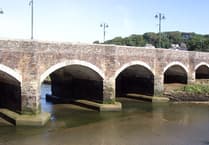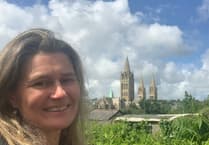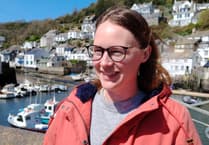A giant stick skeleton, created by a Swedish artist is set to debut to the public tomorrow (Thursday, February 9) at the Eden Project.
Artist Ingela Ihrman has created “First Came the Landscape” an art instillation which depicts are giant skeleton made from the trunk, limbs, and branches of a single beech tree which blew down during Storm Eunice in 2022.
The figure reflects the delicate cycle of life – a system of death and rebirth as things move from one form to another. It will remain here in this location until the pieces of wood – the pelvis, spine, femur, humerus and skull - naturally break down, returning back to the ground and benefiting the surrounding ecology of the earth as they decay.
The figure invites viewers to wonder at its meaning: is it an archaeological excavation of a giant, a lesson in human anatomy, or a hügelkultur – a raised horticultural bed of wood and plant debris?
The title expands the time axis of the place in which the figure rests and is reminiscent of what was here before, when the landscape was shaped by giant forces.
Eden’s art curator, Hannah Hooks, said: “It is really exciting to be working with Ingela Ihrman in bringing her artwork to Eden, and we are delighted that First Came the Landscape is forming a new addition to our onsite collection.
“Ingela’s desire to explore and understand what it means to be both human and alive today – that sense of belonging and not belonging at the same time – is a quality in her artwork that resonates. And there is a poetry to her artwork that is encapsulated in this figure, that at once reminds us of both death and of rebirth – of life."
Eden’s senior curator, Misha Curson, added: “We believe that only by nurturing creativity and deepening our understanding of the interconnections between all living things can we inspire change, protect the planet and engender environmental harmony and social equity. Ingela’s First Came the Landscape is a playful example of regenerative practice, demonstrating how art has the power to impact positive social and environmental change.
“We hope the artwork will encourage visitors to explore the beautiful Outer Estate at Eden, to be nurtured by the landscapes and contemplate their own individual connection to nature.”





Comments
This article has no comments yet. Be the first to leave a comment.